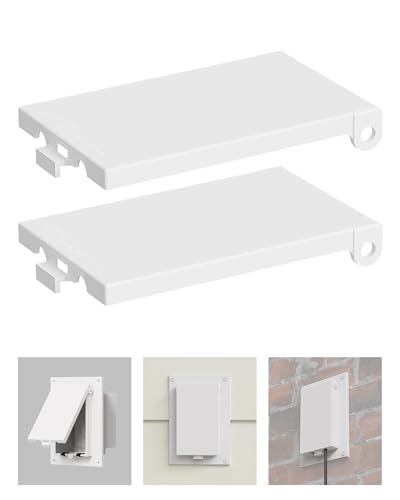Creating your own outdoor seating can completely transform your space and add a personal touch. I’ve always loved the idea of crafting something unique with my hands, and benches are a fantastic starting point. Whether you’re aiming for a rustic charm or a modern sleek look, DIY bench ideas offer endless possibilities.

Not only do homemade benches save money, but they also allow you to customize the design to fit your style perfectly. From using reclaimed wood to incorporating cushions and unique finishes, the process is both rewarding and fun. Let’s dive into some inspiring bench ideas that will elevate your outdoor area and showcase your creativity.
Types Of DIY Outdoor Benches
Choosing the right material is key to creating a durable and stylish outdoor bench. I explore various options to match different aesthetics and needs.
Wooden Benches
Wooden benches bring a natural charm to any outdoor space. I typically use materials like cedar, pine, or reclaimed wood for their durability and appearance.
- Cedar: Resistant to rot and insects, cedar requires minimal maintenance.
- Pine: An affordable option that’s easy to work with and can be painted or stained.
- Reclaimed Wood: Eco-friendly and unique, each piece offers a distinct character.
Building a wooden bench involves measuring, cutting, and assembling the wood pieces using screws or nails. Applying a weatherproof finish extends the bench’s lifespan and enhances its look.
Metal Benches
Metal benches offer a sleek and modern look while providing strength and longevity. I often choose between wrought iron, aluminum, or steel based on the desired style and durability.
- Wrought Iron: Features intricate designs and a classic appearance, ideal for traditional outdoor settings.
- Aluminum: Lightweight and resistant to rust, making it perfect for coastal areas.
- Steel: Offers robust support and can be powder-coated for added protection and color options.
Constructing a metal bench requires precise measurements and secure joining methods, such as welding or using heavy-duty fasteners. Finishing with a protective coating ensures the bench withstands various weather conditions.
Design Ideas For Outdoor Benches
Exploring various design styles can elevate your outdoor space. Here are two popular approaches to consider for your DIY bench project.
Rustic Style
Rustic benches add natural charm and warmth to any garden or patio. I use reclaimed wood or cedar to craft sturdy frames, ensuring durability against weather elements. Incorporating features like rough-hewn edges and visible joinery enhances the authentic rustic look. Adding cushions in earthy tones provides comfort while maintaining the organic aesthetic. Finishing the bench with a weatherproof seal preserves the wood’s integrity and extends its lifespan.
Modern Minimalist
Modern minimalist benches offer sleek lines and functional simplicity. I select materials like metal or smooth hardwoods to create clean, streamlined designs. Opting for neutral colors such as black, white, or gray emphasizes the minimalist appeal. Incorporating built-in storage or integrated lighting can enhance the bench’s functionality without compromising its understated style. Ensuring precise measurements and seamless joins maintains the bench’s contemporary elegance.
Step-By-Step Building Guides
Creating your own outdoor bench adds a personal touch to your space. Follow these guides to build durable and stylish benches.
Simple Wooden Bench
- Materials Needed
- 4×4 wooden posts (for legs)
- 2×4 wooden boards (for frame)
- Plywood (for seating)
- Wood screws
- Weatherproof finish
- Cut the Wood
- Cut the 4×4 posts to your desired bench height, typically 18 inches.
- Cut the 2×4 boards for the seat frame to 4 feet in length.
- Assemble the Frame
- Attach the 2×4 boards to form a rectangular frame.
- Secure the corners with wood screws, ensuring the frame is level.
- Attach the Legs
- Position a 4×4 post at each corner of the frame.
- Screw the legs firmly into the frame for stability.
- Install the Seating
- Cut the plywood to fit the frame dimensions.
- Screw the plywood onto the frame, ensuring it is secure and even.
- Finish the Bench
- Apply a weatherproof finish to protect the wood.
- Allow it to dry completely before use.
Upcycled Pallet Bench
- Gather Materials
- Wooden pallets
- Sandpaper
- Screws
- Casters (optional)
- Paint or stain
- Disassemble the Pallets
- Carefully take apart the pallets using a crowbar or hammer.
- Remove all nails and smooth any rough edges with sandpaper.
- Create the Seat
- Use planks from the pallets to form the bench seat.
- Arrange the planks side by side and secure them with screws.
- Build the Base
- Construct a sturdy base frame using pallet wood.
- Attach the base to the underside of the seat for support.
- Add Legs or Casters
- Install legs made from pallet wood for a traditional look.
- Alternatively, attach casters for a mobile bench.
- Finish the Bench
- Paint or stain the bench to match your outdoor decor.
- Let the finish dry before placing the bench in your desired location.
Materials And Tools Needed
I made sure to gather the right materials and tools before building my bench. This preparation helped the project go smoothly.
Essential Materials
| Material | Description |
|---|---|
| Lumber | I used cedar, pine, or reclaimed wood for the bench frame |
| Fasteners | I selected 3-inch weather-resistant screws and galvanized nails |
| Wood Glue | I applied exterior-grade glue to strengthen the joints |
| Finishes | I chose paint, stain, or sealant to protect the wood |
| Hardware | I installed brackets and metal connectors for support |
| Sandpaper | I used various grits to smooth all surfaces |
Necessary Tools
| Tool | Purpose |
|---|---|
| Saw | I used a circular or miter saw for precise wood cuts |
| Drill | I employed a cordless drill with different bits |
| Measuring Tape | I relied on a measuring tape for accurate measurements |
| Screwdrivers | I used screwdrivers to secure screws firmly |
| Level | I ensured the bench was even with a level |
| Sander | I achieved a smooth finish using a sander |
| Safety Gear | I wore gloves and goggles to protect myself |
Maintenance Tips For Longevity
Keeping your DIY outdoor bench in great shape requires regular maintenance. Here are essential tips to ensure your bench lasts for years:
Regular Cleaning
I sweep my bench frequently to remove leaves and debris. For a deeper clean, I use a mixture of mild soap and water, scrubbing the surface with a soft brush. This prevents buildup that can cause damage over time.
Protective Finishes
Applying a protective finish is crucial. I reapply sealant or stain every one to two years, depending on exposure to the elements. This step safeguards the wood from moisture and UV rays, maintaining its appearance and integrity.
Inspect for Damage
I inspect my bench regularly for signs of wear. Checking for loose screws, cracks, or rust ensures small issues don’t escalate. Early detection allows me to make repairs promptly, extending the bench’s lifespan.
Use Protective Covers
When not in use, I cover my bench with a weather-resistant cover. This protects it from rain, snow, and intense sunlight. If possible, I store the bench indoors during harsh weather to minimize exposure.
Preventive Measures
I place cushions and pads on the seating area to reduce direct contact with the wood. This prevents scratches and moisture absorption, keeping the bench comfortable and in good condition.
Repaint or Refinish
Over time, the bench’s appearance may fade. I repaint or refinish it as needed to restore its look. Choosing high-quality, weather-resistant paint or stain ensures the new finish holds up well against outdoor conditions.
« How to Care for Palms in Your Landscape: Essential Tips for Healthy Trees How to Budget for a Fire Pit: Affordable Tips & Cost Breakdown »
Address Repairs Promptly
If I notice any damage, I address it immediately. Replacing broken parts or tightening loose joints stops further deterioration. Maintaining the bench promptly keeps it sturdy and safe for use.
By following these maintenance tips, my DIY outdoor bench remains a beautiful and functional addition to my outdoor space.
Conclusion
Creating my own outdoor bench was a rewarding experience. Each step allowed me to add a personal touch to my space. Seeing the finished piece in my garden brings me joy every day.
Choosing the right materials made all the difference. Whether you go for the natural look of wood or the sleekness of metal you’re sure to have a bench that stands out. It’s amazing how a simple project can enhance your outdoor area.
I hope these bench ideas inspire you to start your own DIY journey. Building something with your hands not only saves money but also gives you a unique piece tailored to your style. Enjoy the process and the beautiful results in your outdoor space!
















